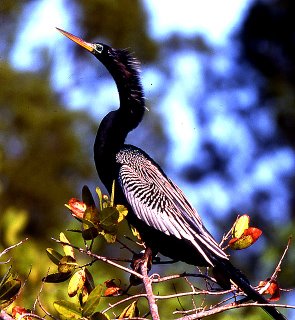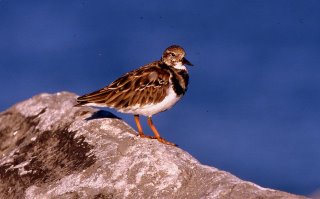Early Bird
The Eastern Bluebird is easily one of my favorite birds. Unlike the migrant birds the Bluebird stays put the entire year through cold and heat.
 I like the Bluebird so much that I make nesting boxes so that my property will be more attractive to them. I even give a few boxes to my friends so that they can also enjoy the Bluebird. Aside from its gorgeous color the Bluebird also has a very melodious voice. I enjoy sitting on my porch swing and listening to their serenade. My Bluebirds seem to prefer that I keep the lawn closely cropped. I think a short crop helps them easily spot tasty meals of grasshoppers and crickets. The male Bluebird at left was patiently waiting his turn to share a tasty morsel with his offspring. The female was sitting on a powerline letting me know her displeasure of my close proximity to the nesting box. Some people open their Bluebird boxes periodically so that they can monitor the nesting cycle from egg to fledgling. I generally open mine only for cleaning before the start of a new nesting season. Enjoy the fun, put up a Bluebird box.
I like the Bluebird so much that I make nesting boxes so that my property will be more attractive to them. I even give a few boxes to my friends so that they can also enjoy the Bluebird. Aside from its gorgeous color the Bluebird also has a very melodious voice. I enjoy sitting on my porch swing and listening to their serenade. My Bluebirds seem to prefer that I keep the lawn closely cropped. I think a short crop helps them easily spot tasty meals of grasshoppers and crickets. The male Bluebird at left was patiently waiting his turn to share a tasty morsel with his offspring. The female was sitting on a powerline letting me know her displeasure of my close proximity to the nesting box. Some people open their Bluebird boxes periodically so that they can monitor the nesting cycle from egg to fledgling. I generally open mine only for cleaning before the start of a new nesting season. Enjoy the fun, put up a Bluebird box.









